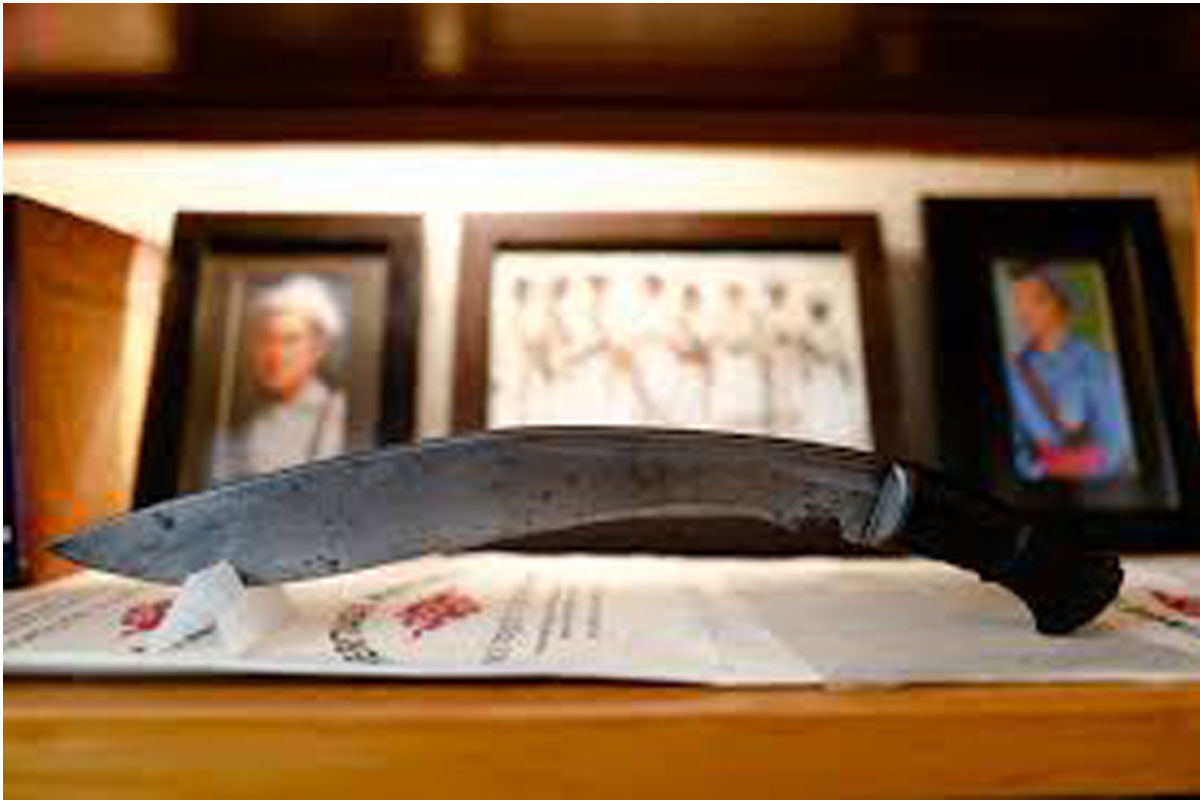The Khukuri, the iconic weapon of Nepal, has a history that stretches back over 2,500 years. While its exact origins remain unclear, many believe the Khukuri’s design dates to the time of Alexander the Great’s invasion of the Indian subcontinent. Some theories suggest that Alexander’s cavalry may have encountered a similar weapon during their campaigns in Nepal and adopted it for its effectiveness.Today, the Khukuri stands as more than just a weapon; it is a living piece of history, carrying with it the strength and spirit of the Gurkhas and the people of Nepal. Whether in battle or in ritual, the Khukuri remains a testament to the enduring power of tradition and the unbreakable bond between the weapon and its wielder.

Crafted primarily in the hills of Nepal, the Khukuri became a symbol of strength for the Gurkha warriors, who adopted it as their weapon of choice. Its curved blade is not only a distinctive feature but a critical element that makes it effective in both battle and daily tasks. The Khukuri’s reputation spread internationally during the Anglo-Nepali War in the early 19th century, where the ferocity of the Gurkhas earned the respect of the British, leading to a lasting military alliance.
Beyond its combat use, the Khukuri holds cultural significance in Nepal, often featured in traditional rituals, including marriage ceremonies. It is typically carried in a leather sheath with a walnut grip, accompanied by two smaller knives called chakmak, used for sharpening and striking fire.
The Khukuri’s legacy continued through both World Wars, where its effectiveness in combat further solidified its fame. It remains the national weapon of Nepal, symbolizing pride, courage, and the warrior spirit of the Nepali people. Today, the Khukuri is not only a weapon but a cherished cultural icon, continuing to captivate people around the world.
The oldest known Khukuris, including one belonging to Drabya Shah from around 1559, can be found in the National Museum in Kathmandu, Nepal. The weapon’s enduring legacy continues to captivate people worldwide, not only as a tool of battle but also as a cherished piece of craftsmanship and a symbol of a proud culture.
